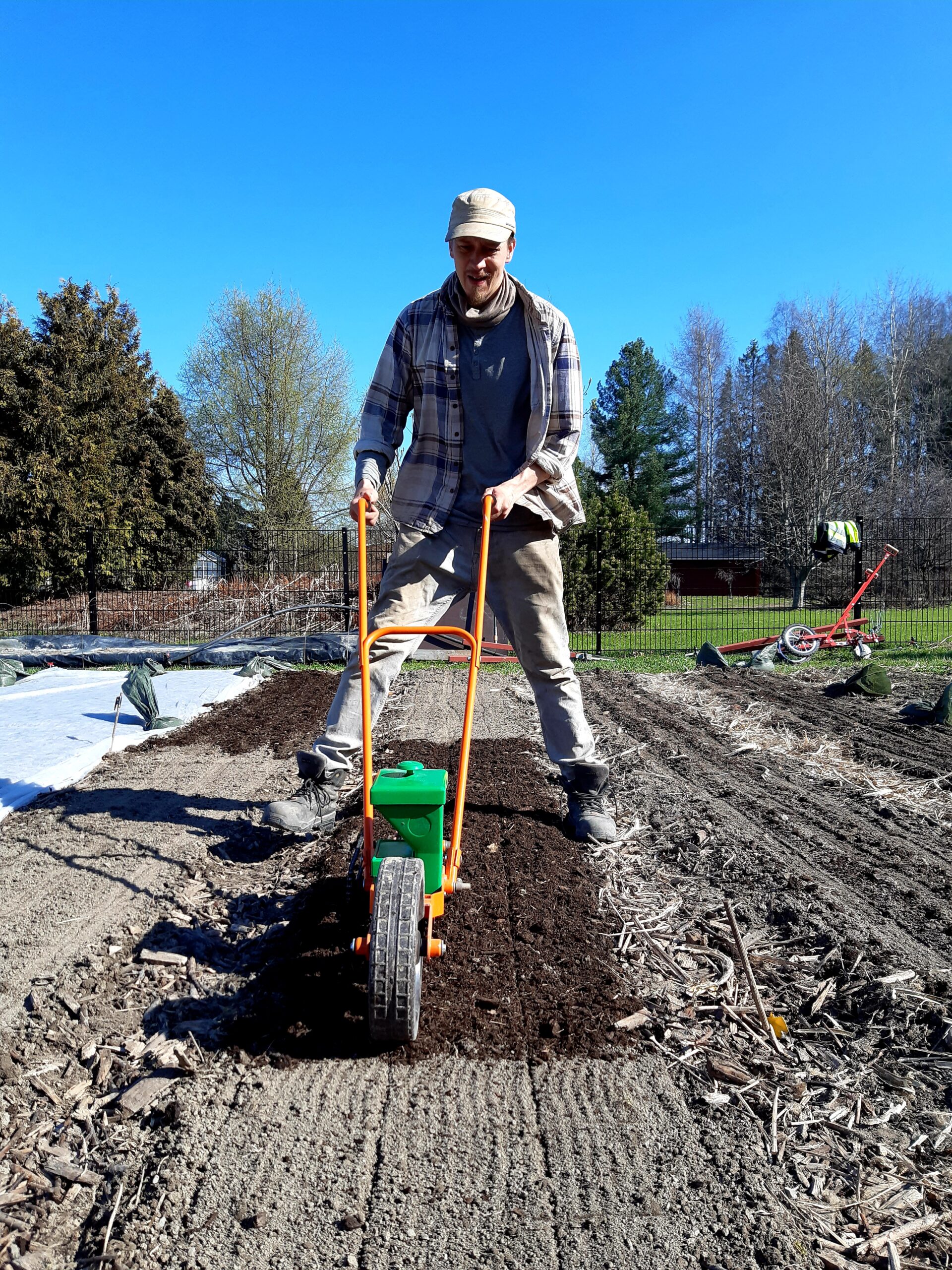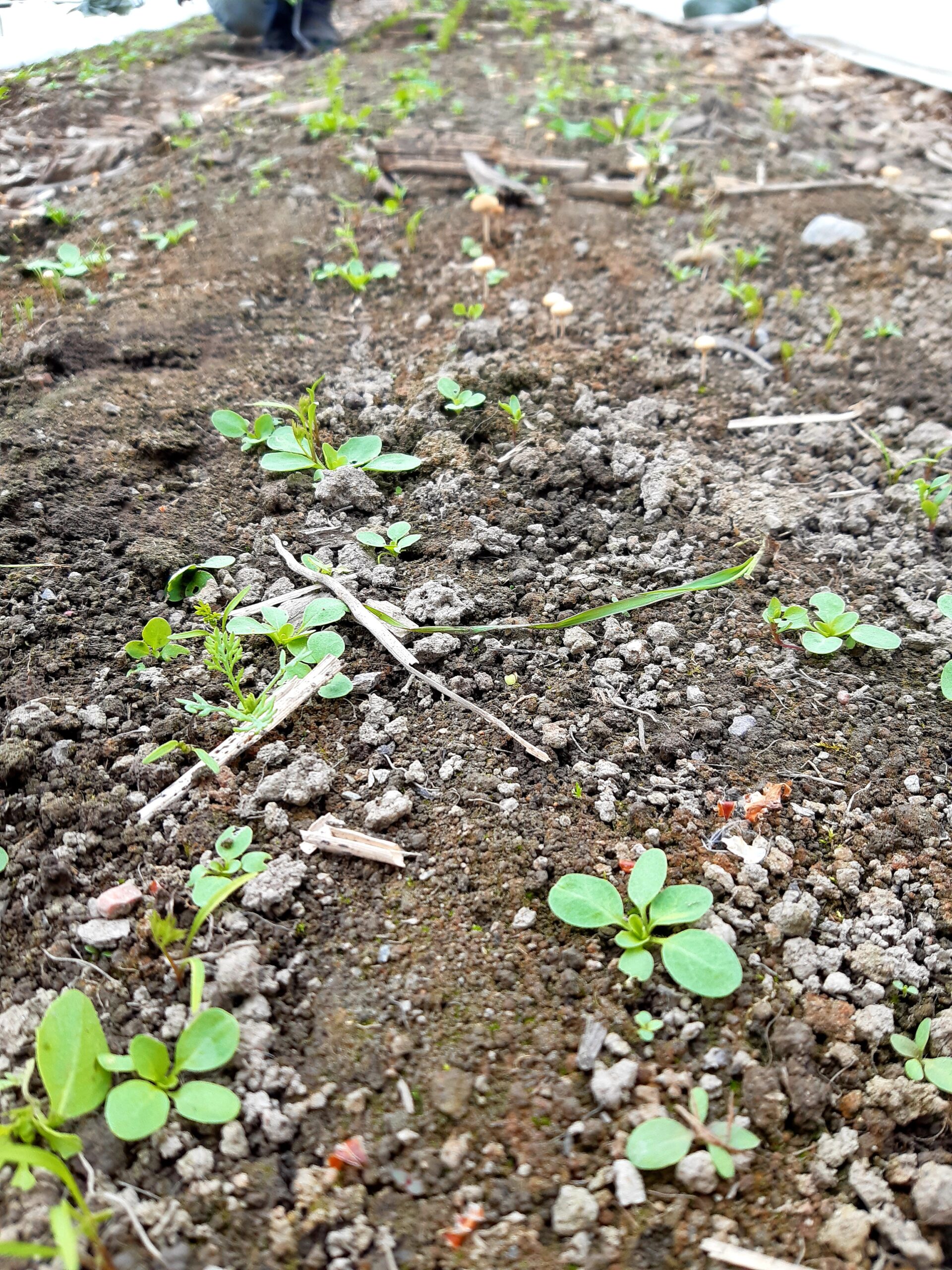At AhlmanEdu we have developed a high quality, microbe-rich, bioactive compost based on the soil food web method that we use in our gardening. This type of compost can really make a difference in your garden, improving soil health and plant growth by providing a wide range of nutrients and microbes to the soil and plants.
Although the bio-active compost is rich in nutrients, the main reason for making and using bio-active compost is to manage plant growth and the naturally occurring nutrient cycles in the soil by introducing the living part of the soil ecosystem: in just one gram of our bio-active compost there are thousands of species of bacteria and fungi, as well as several hundred thousand beneficial protozoa and nematodes that cycle the nutrients for the plants to take up directly in the root zone. This is how nature works and this is what we are trying to support in our garden, creating conditions where natural processes can occur without disruption and invasive intervention, which we believe is the ultimate role of the gardener.
The bioactive compost recipe and production process is developed as part of the Soil Food Web method. The composting process must be carefully monitored and managed to support the growth of beneficial aerobic micro-organisms that naturally occur in balanced soil systems. Bioactive composting is nothing more than managing the process of decomposing organic matter to get the best results for the plants you want to grow. It is, in fact, microbe farming . In nature, plants are part of the ecosystem and as such are interdependent with the soil organism and its functions. Plants cannot be fully understood in isolation from the soil system and vice versa, which is why the use of bio-active compost as a biological amendment gives the best results for intensive vegetable production.
The carrot field trial
To document the effects of soil biology on plant growth and soil structure, we are conducting a small-scale trial on our carrot field, where we treat the soil and plants in the experimental plot with compost and compost extract, which is made by mechanically extracting microorganisms from the compost into water, and compare growth, yield, soil biology and soil structure characteristics. The control plot is always treated with water only. The trial started in May with initial soil biology assessments and, after careful preparation of the plots, the seeds were sown. We treated the seeds to be sown on the trial plot with the compost extract for a few minutes to inoculate them with beneficial organisms and allowed them to dry completely before sowing. We also spread a thin layer of bioactive compost over the bed.

Sowing the carrot seeds

Beds ready for sowing
As we monitored the progress, we noticed a significant difference in the number of seeds that sprouted, as well as their size.

Germination on the trial plot

Germination on the control plot
The last picture shows the situation and the growth difference in the test plot (on the left) compared to the control plot (on the right). According to these visible differences we can safely conclude that soaking the seeds in a high quality biologically rich compost extract helps the plants to sprout more vigorously and in greater numbers.

Comparison of the plots one month after: trial plot treated with bioactive compost on the left and the control plot on the right
The quality of the biological soil amendments we use is regularly checked under the microscope, because that’s how we really know what kind of compost liquid we’re putting into our soil: The biological assessments of the liquids estimates the bacterial and fungal biomass and diversity and the number and diversity of micro-fauna per gram of liquid, and wether they’re beneficial or anaerobic, harmful organisms.
Every step of the process is carefully documented and managed to ensure that everything is controlled and every input is known. The trial will continue until the end of the growing season, during which time the plants and soil will be treated with compost extract and tea.
Learn more about the production of bioactive compost and compost liquids here.
